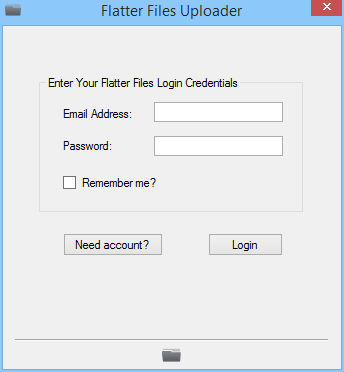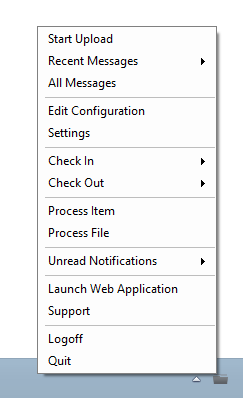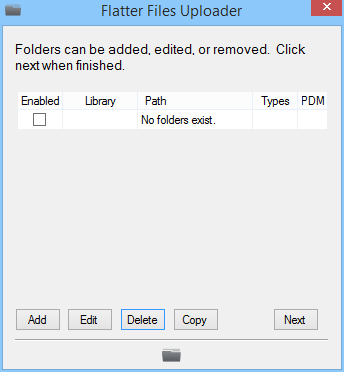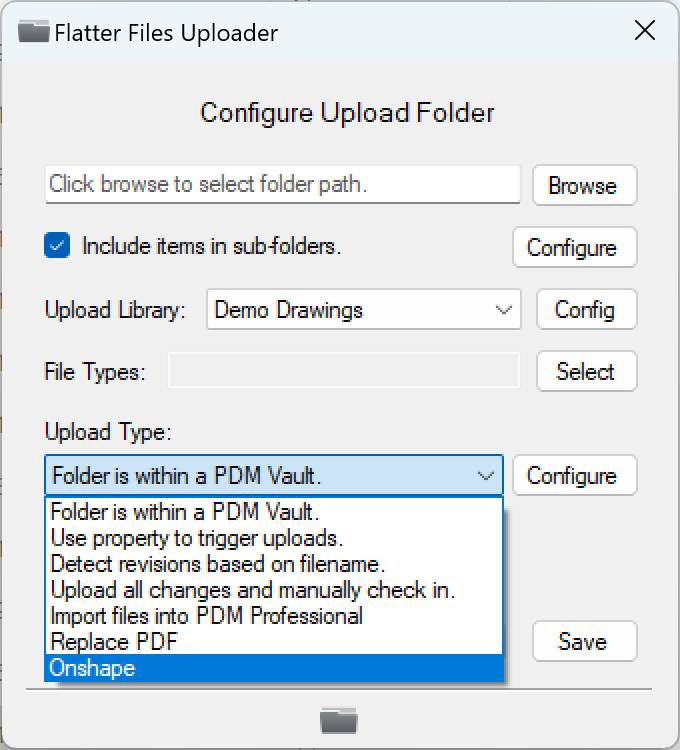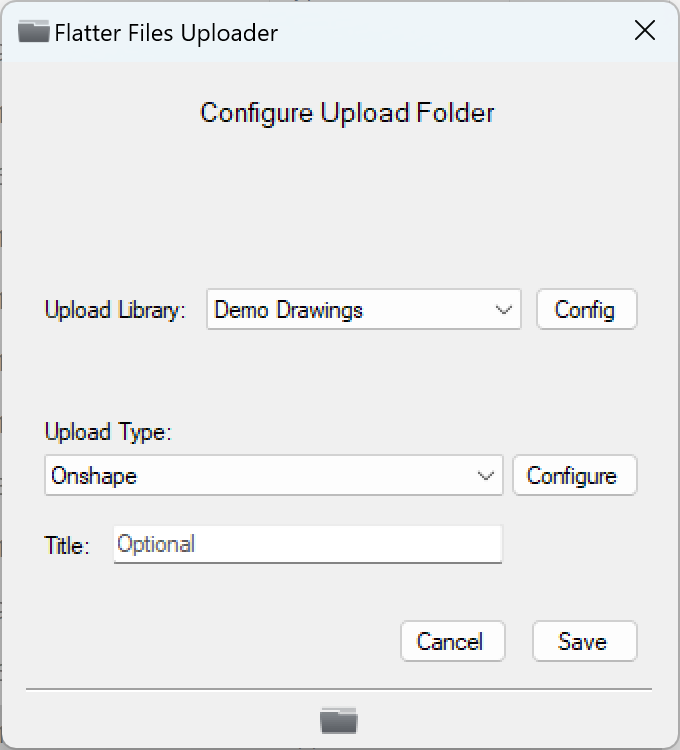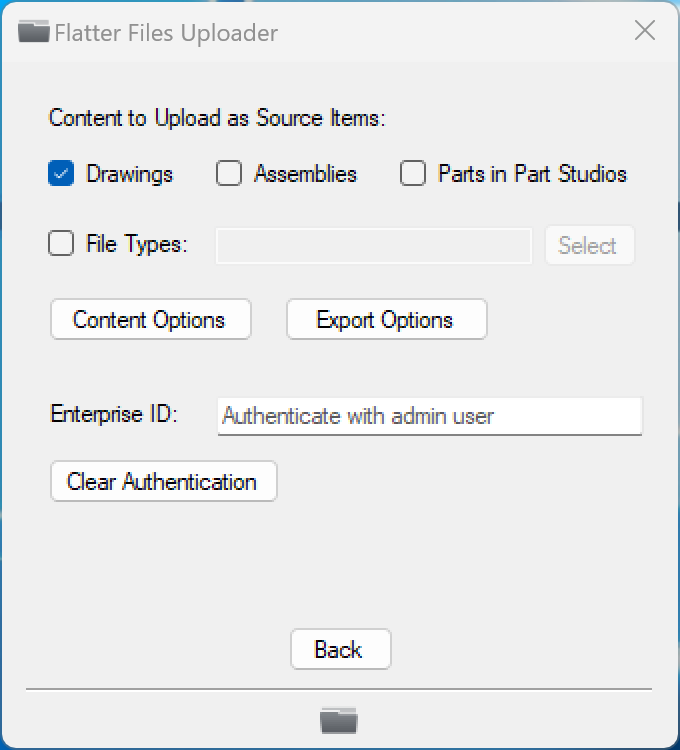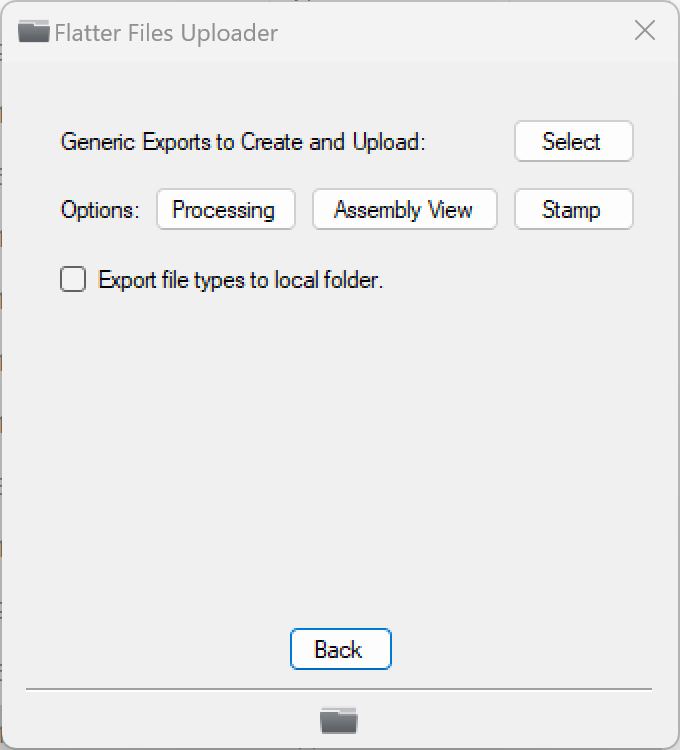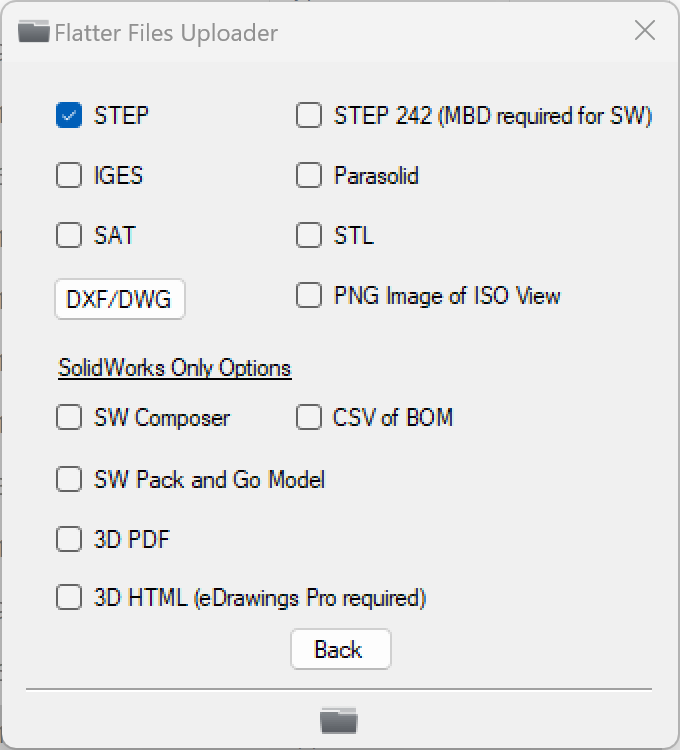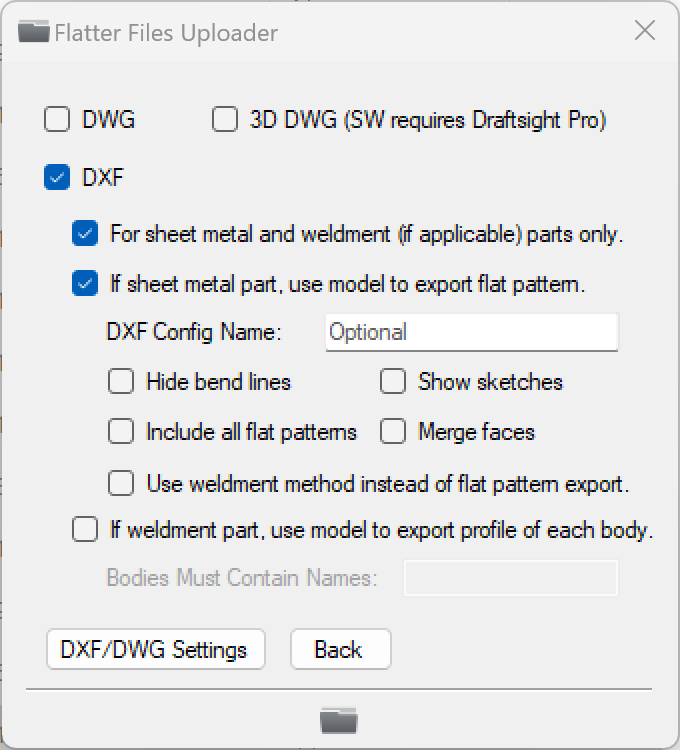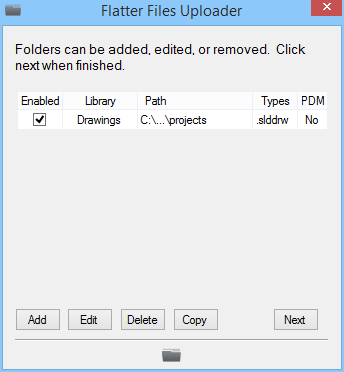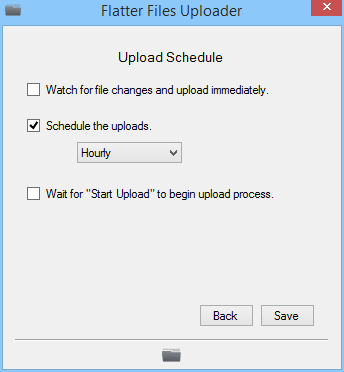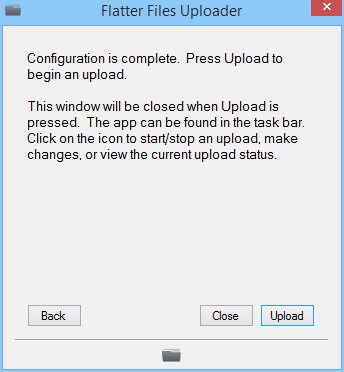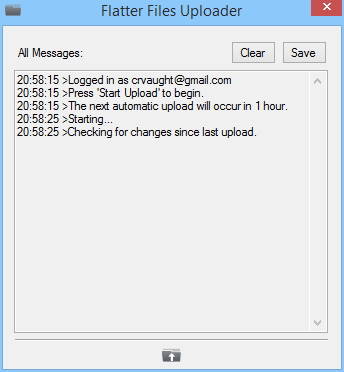Onshape Tutorial
This tutorial will describe the typical setup for using Flatter Files with Onshape.
Prerequisites:
- Onshape Professional or Enterprise account.
- A Windows computer that has access to the internet.
- Administrator access to Onshape and Flatter Files.
1. Install Flatter Files Uploader
Flatter Files works by using the Flatter Files Uploader (a Windows desktop application) to retrieve your revisions from Onshape and upload a resulting PDF to the Flatter Files Cloud. Additional file types such as STEP, DXF, etc can also be included with the PDF.
Install the Flatter Files Uploader application onto the computer you plan to use via the following steps.
- On the Windows computer you plan to use, click here to download the installer.
- Double click the installer to install the application.
- Follow the installation instructions. Once finished the application should automatically open.
2. Login and Display Configure Upload Folder
The Uploader application requires a user account to login. All configuration data for the Uploader will be saved to the users account. Once logged in, the steps below will result in displaying the window used to configure an Upload Folder.
- Once the Uploader application is installed and opened, the dialog shown below will be displayed. Enter your credentials and then click “Login.”
- If successful and if this is the first time you have logged in to the Uploader, you will be presented with a welcome screen within the application. Click next and a dialog appears to configure your first upload folder. Skip to step 3 if you now see a window with the title “Configure Upload Folder.”
- If the welcome screen does not appear, then open the application menu by clicking the icon located in the bottom right of your task bar. This will open the menu shown below.
- Click “Edit Configuration.”
- The window shown below will be displayed.
- Click “Add” which will display the Configure Upload Folder window.
3. Configure Upload Folder
The Uploader application requires that you configure a folder for uploading. This folder that you configure is the only data that will be uploaded by Flatter Files. All configuration and settings are specific to the folder being configured. Multiple folders can be configured. This tutorial will only configure a single folder that will process all of your Onshape revision data.
- You should now see this window:
- Click the “Upload Type” selector and change the type to Onshape as shown below.
- Click the “Configure” button next to the Upload type.
4. Onshape Integration Settings
Flatter Files supports various integration options that are specific to Onshape items.
- You should now see this window:
- The first option is to determine what source content should be uploaded as unique items. Check all that apply.
Keep in mind that FF can include generic CAD files for each drawing uploaded. It locates the corresponding 3D model for each drawing it processes and then creates the desired generic CAD file and includes it with the PDF that is created for the drawing. Thus, only enable Assembly models and/or Parts in Part Studios if you don’t have corresponding drawings for those models.
- If applicable, obtain your Enterprise ID from Onshape by going to Enterprise Settings
- Click “Details” and then click “Copy to clipboard” next to your Enterprise ID value.
- Paste in the value for the Enterprise ID in the Uploader.
Flatter Files includes multiple options with regard to what is processed and uploaded to Flatter Files. This includes limiting what is uploaded based on a set of document IDs or parent IDs. In addition there are settings for how to handle multiple revisions and obsoleted items.
- To edit any of these settings simply click the “Content Options” button.
- You should now see this window:
- Edit the options shown based on your preferences.
5. Enable Generic CAD Uploads
This step will configure the Uploader to include a STEP file of the model referenced by each drawing tab and a DXF file of your sheet metal flat patterns for each applicable item.
- Click the “Export Options” button.
- This will display the window shown below:
- Click the “Select” button next to the “Generic Exports to Create and Upload.”
- This will display the window shown below:
- Select any of generic CAD exports desired. For this tutorial we have selected STEP.
- Click the “DXF/DWG” button which will display the window shown below:
- Enable the “DXF” option.
- Enable the “For sheet metal and weldment (if applicable) parts only” option.
- Enable the “If sheet metal part, use model to export flat pattern” option.
- Click the “Back” button multiple times until you return to the Configure Upload Folder window as shown below:
- Click the “Save” button to finalize the folder configuration and save it.
7. Schedule the Uploads
This step will allow you to configure the Uploader to perform uploads based on a schedule. Ideally you want the uploads to occur fairly regularly such that your data stays very current. Typically scheduling an upload to occur every 1-4 hours is ideal. When an upload occurs, the first thing it does is check for any changes, if none have occurred then nothing is uploaded.
- The Folder List window should now be displayed as shown below:
- Click next to display the Upload Schedule Options as shown below:
- Select the schedule that makes the most sense for your available resources. I would recommend enabling the second option and selecting a schedule of something between 1 and 4 hours.
- Click the “Save” button.
7. Start Upload
This step will manually start the first upload.
- The image below should now be shown:
- Click the “Upload” button to perform the first upload.
- The window will now be closed.
- To view the status click the icon in the task bar to display the menu.
- Select the option “All Messages.”
- The window displayed is shown below:
- A log of messages will continuously be added during the upload process. Once complete the last message will indicate the amount of time until the next upload.
- Viewing the messages during the upload is not required or by any means necessary during normal operation.
8. View Drawings in Web Application
At this point, your drawings are now accessible for viewing in the Flatter Files web application as well as on the mobile applications for iPhone, iPad, and Android. The steps below will view a drawing in the web application.
- Click this link to open the web application or go to www.flatterfiles.com and click Login at the top right.
- Enter your Login credentials.
- Your uploaded drawings will be shown, double click on an item to display the PDF or enter a search query in the top right search box to located the specific drawing.
- Additional details regarding drawing access can be found here
9. Complete
This tutorial is now complete. Your account should now be integrated with Onshape. As you create new revisions in Onshape they will now also automatically be uploaded to Flatter Files. If you have any questions or need additional help please email [email protected].
